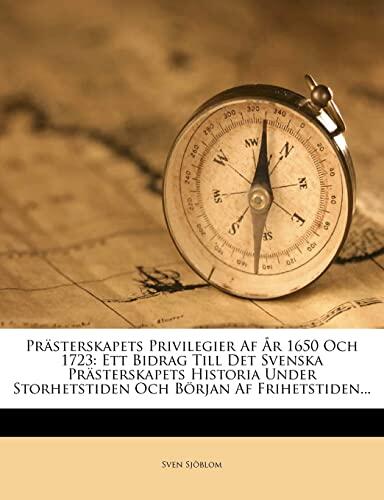
Prästerskapets Privilegier Af År 1650 Och 1723: Ett Bidrag Till Det Svenska Prästerskapets Historia Under Storhetstiden Och Början Af Frihetstiden...
작성자
Sven Sjoblom
아직 평점이 없습니다
Religion & Spirituality
형식
페이퍼백
페이지
166
언어
스웨덴어
출판됨
Apr 9, 2012
출판사
Nabu Press
ISBN-10
1279914009
ISBN-13
9781279914007
설명
Sven Sjöblom delves into the intricate history of the Swedish clergy during a critical period in the nation's past. By examining the privileges granted to the clergy in 1650 and 1723, he sheds light on the sociopolitical landscape of Sweden during its great power era and the early stages of the Age of Liberty. His work reveals how these privileges not only shaped the clergy's role within society but also reflected the broader power dynamics at play during this transformative time.
The book provides a comprehensive analysis of rituals, rights, and responsibilities assigned to the clergy, providing readers with a deeper understanding of the institutional structures that supported religious authority. Through meticulous research, Sjöblom uncovers the nuances of clerical life, from their interactions with state officials to their influence on the general populace, painting a vivid picture of their importance in Swedish culture.
As an enlightening contribution to the study of Swedish history, this work invites scholars and enthusiasts alike to reflect on the enduring legacy of the clergy and their privileges. It encourages a reconsideration of how such histories shape contemporary understandings of religious and civic life in Sweden, making it an essential read for anyone interested in this pivotal era.
The book provides a comprehensive analysis of rituals, rights, and responsibilities assigned to the clergy, providing readers with a deeper understanding of the institutional structures that supported religious authority. Through meticulous research, Sjöblom uncovers the nuances of clerical life, from their interactions with state officials to their influence on the general populace, painting a vivid picture of their importance in Swedish culture.
As an enlightening contribution to the study of Swedish history, this work invites scholars and enthusiasts alike to reflect on the enduring legacy of the clergy and their privileges. It encourages a reconsideration of how such histories shape contemporary understandings of religious and civic life in Sweden, making it an essential read for anyone interested in this pivotal era.